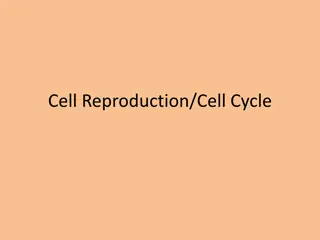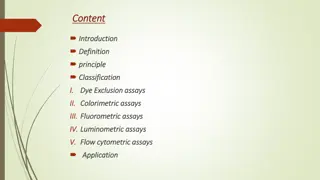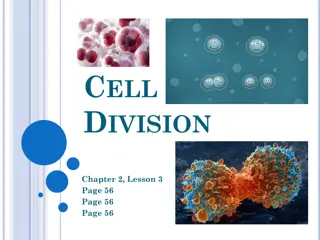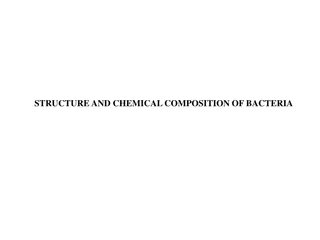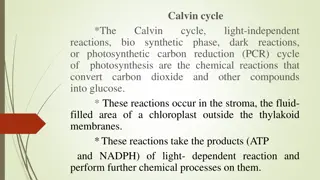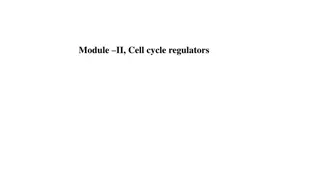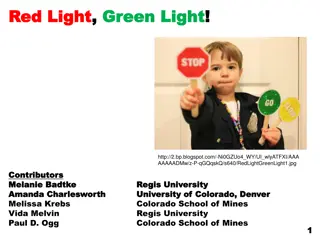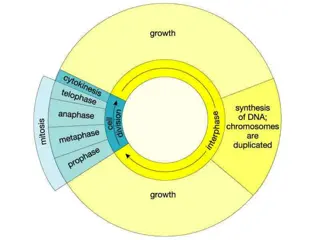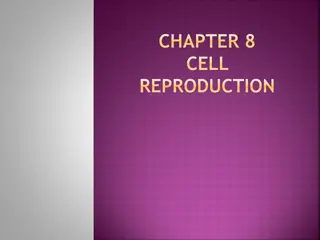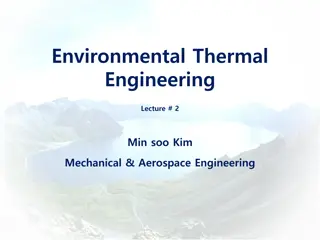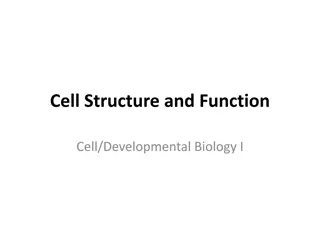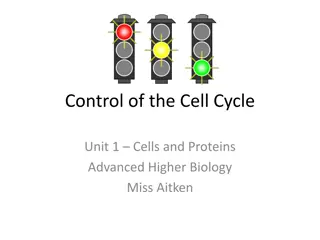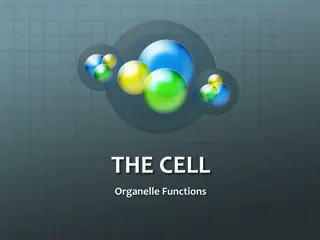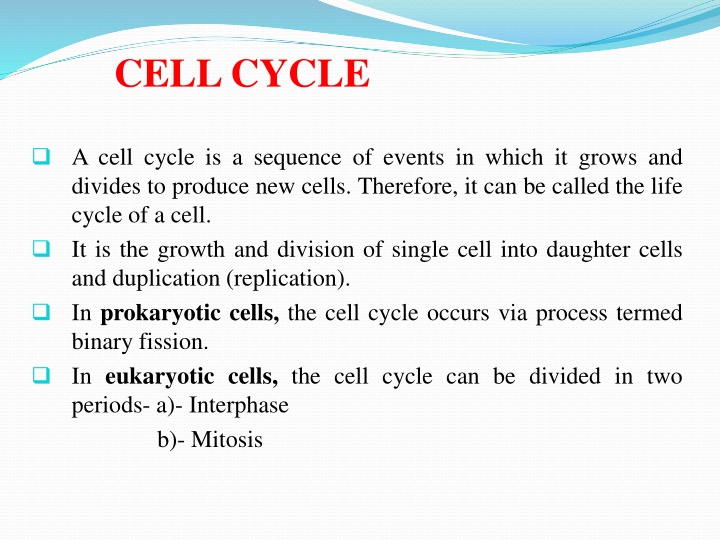
Cell Cycle: Growth, Division, and Regulation
Dive into the intricate process of the cell cycle, from growth and division to the regulatory mechanisms that ensure accuracy at each phase. Explore the phases of interphase and mitosis, learn about cell cycle checkpoints, and discover how cyclin proteins regulate cell division.
Download Presentation

Please find below an Image/Link to download the presentation.
The content on the website is provided AS IS for your information and personal use only. It may not be sold, licensed, or shared on other websites without obtaining consent from the author. If you encounter any issues during the download, it is possible that the publisher has removed the file from their server.
You are allowed to download the files provided on this website for personal or commercial use, subject to the condition that they are used lawfully. All files are the property of their respective owners.
The content on the website is provided AS IS for your information and personal use only. It may not be sold, licensed, or shared on other websites without obtaining consent from the author.
E N D
Presentation Transcript
CELL CYCLE A cell cycle is a sequence of events in which it grows and divides to produce new cells. Therefore, it can be called the life cycle of a cell. It is the growth and division of single cell into daughter cells and duplication (replication). In prokaryotic cells, the cell cycle occurs via process termed binary fission. In eukaryotic cells, the cell cycle can be divided in two periods- a)- Interphase b)- Mitosis
PHASES OF CELL CYCLE It consists of 2 major activities. INTERPHASE:- It is the longest phase. The typical duration of this phase is 23 hours. It is the resting phase of the cell, resting refers the rest the cell from division. But the cells in the interphase are metabolic active. The metabolic activities are high in this phase. Cell grows during phase, The mRNA and rRNA are synthesize the chromosomes are duplicate into two chromatids. thus two centrioles are formed and microtubules arise. STAGES OF INTERPHASE:- a)- G1phase b)- S phase c)- G2 phase
MITOSIS:- This period is also known as the cell division phase and occurs just after the G2-phase. Here, the cell divides its genetic material (DNA) and cytoplasm to form two new cells. The M-phase has duration of 45 to 60 min. This phase has two sub phase called karyokinase and cytokinase. A):- KARYOKINASE:- it refers the cell division of nucleus into two daughter nuclei. It has 4 sub stage:- a)- Prophase b)- Metaphase c)-Anaphase d)- Telophase B):- CYTOKINASE:- It refers the cell division of the cytoplasm resulting in two daughter cells.
CELL CYCLE CHECKPOINTS These are the control mechanism if cell cycle in eukaryotic cell. It verify the process at each phase of cell cycle have been accuratelycompleted before progression into the next phase. There are three main checkpoints thatcontrol thecell cycle. G1 checkpoint G2 checkpoint The spindle checkpoint, metaphase toanaphase. at the transition from
CELL CYCLE REGULATION The cell cycle is regulated by :- 1. Cyclin 2. Cyclin-dependent kinase (CDKs) 3. Cyclin-dependent kinase inhibitors(CDKIs) 1. Cyclin:- Cyclin are the family of proteins which regulates the cell cycle. There are several types of cyclin that are active in different parts of the cell cycle and causes phosphorylation of CDK. There are four basic types :- G1 cyclin, G1/S cyclin, S cyclin, and M cyclin.
Cyclin- dependent kinase (CDKS):- These are the family of protein kinases that regulates the cell cycle. They are present on all known eukaryotic cells. In order to drive cell cycle forward, a cyclin must activate oe inactivate many target proteins inside of the cell. Cyclin drive events of the cell cycle by partnering with the family of enzymes called the cyclin dependent kinases (CDKS). A lone CDK is inactive, but the bonding of a cyclin activates it, making it a functional enzymes and allowing it to modify target proteins. Cyclin dependent kinase inhibitors (CDKIS):- CDKIS is a protein which inhibits cyclin-dependent kinase (CDK). Cell cycle progression is negatively controlled by cyclin dependent kinase- inhibitor. These are involve in cell cycle arrest at the G1 phase. 2. 3.
POSITIVE REGULATIONS:- These are those which control the changes necessary for cell division. They include:- Cyclins Cyclin- dependent kinase (CDKS) NEGATIVE REGULATIONS:- Are those which control the positive regulators. They include:- Inhibitors of cdks :- Inhibitors of kinases . Cdks inhibitory proteins.


